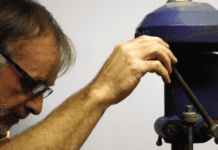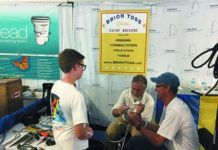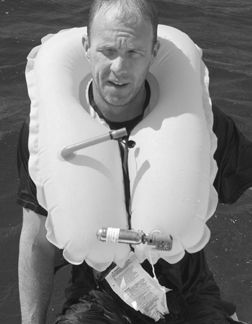
As most readers know, at the end of each year—in the fat December double-issue—Practical Sailor characteristically publishes two items in which readers manifest considerable interest, as indicated by the resulting letters and phone calls.
One is the annual index, which lists the tests, market scans, and Chandlery items presented in the year’s issues. The other is this round-up of the year’s most impressive equipment, boats, and gear. We call it “Gear of the Year.”
As the December issue planning begins, senior members of the magazine’s staff make a list of the best products reviewed during the year. And then the fun begins.
There usually are about five items that appear on everyone’s list. The selection of the other five can be contentious as individuals campaign for their selections. After several exchanges of lists, conferences, and good-natured (usually) insults, the final list emerges.
The list always includes some significant products that seem certain to make sailing better. Some items come from PS’s “Chandlery” column. (That column features new gear, much of which emerges from the garages and basements of the inventors and dreamers PS has always encouraged.)
It should be noted here that, as one might expect, most of our Gear of the Year Winners for 2005 are expensive. Quality is not cheap. (To counter high costs, PS often lists in its reports what we call “Best Buys.”)
Without further ado, here are the 2005 Gear of the Year winners. (The list is arranged chronologically by issue, because asking the staff to rank the products would be difficult and might even lead to ungracious graffiti in the restroom.)
Sospenders 38MBP PFD
Practical Sailor recognizes that belt-style, inflatable PFDs are not preferable to PFDs worn as vests. These waist pack models are, however, a less cumbersome and worthwhile alternative, evinced by the half dozen or so models that populate the market. These include belt packs from Mustang, Seapro, SOS Inc., Stearns, and West Marine, with prices ranging from about $60 to $140. All are inflated with CO2cartridges and immediately turn into vests that must be donned by the user.
In our Jan. 15 issue’s report, the first concern was buoyancy, which ranged from 15.5 to 35 lbs. Next came ease of donning; comfort and fit, both on land and in the water; re-arming; whether reflective tape is used; warranty, and price—both for the belt pack and the re-arm kit.
The testing was done in calm water by a fully-clothed tester and in water with waves running from four to six feet. The questions to which rated answers were sought included: how quickly did the vest inflate, were the straps easy or difficult to operate, did the user feel secure, did the vest slip, was it easy to adjust, etc.
Some of the final conclusions were obvious. Belt packs are less expensive and easier than regular PFDs to wear (while uninflated). However, in an emergency, they require the user to pull a cord to inflate the vest (there was but one auto-inflating vest in our test), pull the vest over his or her head, and tighten and snap or tie the waist straps.
The vest rated best was the Sospenders Model 38MBP. Others rated easier to don and several were more comfortable to wear, but the 38MBP was the best all-round performer, especially in the real-world, rough-water phase of the testing. That model sells for just over $60. The Stearns 375 ($70) came in second.
Epifanes’ High Gloss Varnish
Of all the testing done by Practical Sailor, paint and varnish probably take the most time. Surfaces must be carefully selected and prepared. Coatings must be applied meticulously. Materials like sandpaper, rags, containers, and brushes disappear in large quantities; everything must be perfectly isolated.
Then, the whole kit and caboodle goes outdoors, for extended periods of time, during which efforts must be expended to assure that the exposure is even for each section or corner of the test surfaces. And, examination and record-keeping schedules must be maintained.
Spar varnish and good boat paint don’t give up easily. In the majority of cases, marine-grade coatings are vastly superior to those used ashore. It simply is not true that “hardware store” varnish and paint is the equal of those made and sold to boat owners, at hellish prices, of course. Which is why the testing takes time … usually years for the good stuff.
Practical Sailor’s tests regarding what products work best for teak have been going on for a long time. And our basic conclusion is this: The teak on your boat is never, ever going to look as good as it did when it was new.
Our latest report, “Teak Treatment All-Stars Finale,” appeared in the Feb. 15 issue. It was the culmination of several other tests that established the best varnishes, the best teak oils, and the best “teak treatments,” including pigmented stain.
Representing varnishes in this shoot-out were Epifanes High Gloss, Pettit Hi-Build, and West Marine’s Skipper (which is sold now as Admiral’s). Representing the others were products like Armada MC 2000, Honey Teak, Deks Olje, and Sikkens Cetol.
The intent was (1) to evaluate comparatively how the products handle in the application; (2) how they look when first applied; (3) to subject all of them to exactly the same exposure and see how they fare over time.
The final chart published with the report contains a mass of information that gives boat owners a number of choices. Practical Sailor’s choice of a product that will best preserve the beauty of teak was—after two full years of exposure to summer sun, winter snow, rain and the widely-varying temperatures of New England—the Dutch-made Epifanes High Gloss Clear Varnish. It will set you back about $30 a quart depending upon where you obtain it.
Schaefer’s Universal Mount
That same issue featuring the “Teak Treatment All-Stars Finale” also contained the first of those Chandlery items that made our list. Schaefer Marine calls this product a “universal deck mount.” It’s a deck plate that interchangeably mounts your choice of a cleat, a standup deck block, or a padeye. Each of the three snap or screw in and out, without tools!
Practical Sailor gave it two pages (and four photos)—a lot of space for a Chandlery item. But we did so because this product is beautifully engineered, well made, and has a versatility that can’t be obtained elsewhere.
The basic fitting is a low-profile, stainless-steel casting, which requires a 1-3/4″ hole in the deck. Schaefer supplies a good backing plate, of course.
The complicated deck fitting has a receptacle hole, threaded at the bottom to mount the block or deck eye. It even comes with a nylon plug to protect the threads when they’re not in use. The top edge of the fitting has four dogs that permit you to twist home the big sturdy cleat, which is when you’d use the nylon plug.
This versatile bit of hardware makes it possible to use very few fittings, placed strategically, to serve a number of purposes, thus saving weight and money. And cutting down the number of fittings that clutter the decks of most boats also reduces the threat to feet and footing.
The new Schaefer piece carries suggested list prices that seem very high. The deck plate is $90. The cleat is $136. The screw eye is $23. The standup block is $168, for a combined total of $417. When the discounters get them, the set should run about $300, or perhaps less when production really gets rolling.
Because boat builders are likely to be quick in adopting this new fitting (which will save having to use several dozen regular fittings), production should be assured.
Standard Horizon’s CP1000C
Near the middle of this year, Practical Sailor set out to look at chartplotters. In our April 15 issue, we offered a report on big-ticket plotters costing from $2,600 to $3,900. There were but four of them, and Raymarine’s C120 squeaked by Furuno’s GP1900C, mostly because the Raymarine has a larger screen area and its software is ever-so-slightly better than Furuno’s.
Perhaps more interesting was the test of three chartplotters with price tags no greater than $2,000. Slapping price considerations on these things makes the offerings much more tempting. That report appeared in the May 1 issue, and the three products included: Standard Horizon’s CP1000C ($1,516), the Lowrance GlobalMap 7000C ($1,657) and the Si-Tex ColorMax 11 ($1,681). When the prices are that similar, the bucks probably don’t matter. Viewability and usability does.
Viewability was tested rigorously during the day, night and twilight, indoors and out, from various angles, with and without polarized sunglasses. Ratings clearly emerged for various lighting conditions.
Then, ease of operation—it’s called “user interface” in the jargon of electronics—involved performing almost every function available. Units with intuitive software, alphanu-meric keypads, and numerous dedicated functions were rated higher.
As we said in our conclusions, Standard Horizon made it easy. The CP1000C has an alphanumeric keypad to speed the pace of manual data entry, easy-to-use software, and a bright and crisp display screen, as well as a longer warranty.
Lewmar’s Mainsheet Traveler
To test five mainsheet travelers from the companies most recognized for fabricating or selling this kind of gear for midsized boats, Practical Sailor got into the construction business.
We long ago discovered that some tests require that you design and build a rig that’ll give meaningful results because comparative tests aboard actual boats sometimes are not possible.
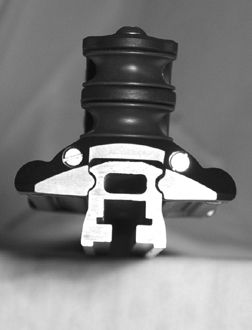
The mainsheet travelers test, which appeared in our June issue, is a fine example of this. Our ambitious goals started with a desire to quantify how much force would be needed to move a traveler car along a track if the attached 4:1 mainsheet were under a 400 lb. load. That’s admittedly somewhat excessive, but we wanted to ensure that these products functioned well under stress.
Other areas of interest concerned how much the track flexed, electrical isolation, sliding smoothness, track strength, flexibility of mounting, car control, and angular leads that exerted tortional loads. The tortional loads are indicators of the important “center of effort” (CE) that foretells how much of an angled load the traveler can withstand.
The testing required a rugged rectangular jig with multiple spring scales to measure loads, as well as our trusty Dillon dynamometer to assure the exactness of the mainsheet load.
All of the data gathered in hours and hours of testing was entered in a single chart that displays not only details about these travelers, but which ones excel at various tasks defined by the engineering requirements.
Although there were striking differences, all of these travelers we deemed to be well-engineered and suited to the task of controlling the mainsheet on any mid-sized sailboat.
Schaefer Marine’s very simple, very rugged wheel-bearing car stood out as bulletproof. Antal Marine’s car, with two races of ball bearings, was the smoothest to operate. Harken’s car had the lowest CE. Ronstan’s had a minimal profile.
When it all was added up, the Antal traveler was tops, but its hefty price put it in second place behind Lewmar, which is an elegant and well-executed design that comes in at $699, $200 less than the $900 Antal.
Icom Radios
As with the chartplotters discussed above, PS’s 2005 tests of fixed-mount VHF radios resulted in two reports. The report on those that cost no more than $150 appeared in the July 15 issue. There were six of them, from Icom, Raymarine, Standard Horizon, Uniden (two models) and West Marine, which is also built by Uniden. The other report, in September’s double issue, dealt with seven top dollar radios—from roughly the same makers, plus Furuno, always a high-stakes player in electronics.
VHF radio is still the most common and useful communication tool aboard boats. Though cell phones and satellite phones are coming on, these suffer in comparison with VHF because connections can often be poor. And with VHF, a “mayday” goes to everybody within line of sight.
In both the under and over $160 categories, PS tested radios first in bench conditions, using a Ramsey COM3010 service monitor. This apparatus checks out transmitter power output; frequency accuracy and stability, and receiver sensitivity. The transmitter tests were performed on channel 16, first at room temperature and then at temperatures near the maximum ranges of each radio. The minimum range, 15° F, was produced by simply placing the radio in a freezer for four hours. The maximum, 122° F, was done equally simply—with a fish smoker.
And other checks were done. To imitate conditions aboard a boat—first with the engine running and the alternator keeping the power up to snuff, and then with nearly dead batteries—two different input voltages were used, from 12.8V down to 11V. The latter is a severe but important test for any transmitter.
The equally important receivers were measured, and all the radios rated Good or Excellent).
So, how did it all come out?
It was a best-at-any-price sweep for Icom. In the $160 or less category, Icom’s M302 beat the others in basic transmitter, receiver and audio. At the upper price range, the Icom M602—packed with features (including a hailer that can produce automatic fog signals), an alphanumeric keypad, and, most importantly, the best transceiver performance of this elite group—was an easy winner. The Best Buy label was captured by Standard Horizon’s Quantum GX2360S.
Johnson Wrap Pins
Falling squarely in the why-in-the-world-didn’t-we-think-of-this-before category, is the new Wrap Pin. It was invented and introduced in 2005 by an excellent company, Johnson Marine of East Haddam, CT. Like many good products, it promptly appeared in Practical Sailor’s Chandlery column, which highlights new and improved gear.
The “Wrap Pin” name has been trademarked by Curt and Burt, the sons of C. Sherman Johnson, who started the company in 1958.
Basically it’s a fine, new way to protect yourself and your sails from the sharp ends of bent cotter pins. These tend to attack passing ankles, and snag any line or sail that dares come near.
Ingeniously simple, a Wrap Pin is a cotter pin glued perpendicularly (with high-strength adhesive) to a short piece of heavy-duty hook-and-loop material. To use it, you simply insert the cotter pin into the hole in the clevis pin or shackle or turnbuckle, and wrap the material around the pin to secure it.
Wrap Pins come in two sizes, one for 5/16″ to 3/8″ clevis pins, the other for 7/16″ to 1/2″ pins. They are sold in kits of eight for $26.95, which comes out to a bit more than $3 each. That’s not bad, considering that someone has to cut the hook-and-loop material to length, apply a dab of thick glue, work the head of the pin into the glob of glue and then wait for the glue to set enough to keep the pin perpendicular.
Wrap Pins are available from Johnson Marine, and they’re beginning to appear in chandleries in many locations.
Maxwell Windlasses
Yet another two-part testing effort at PS resulted in reports about a broad range of windlasses for pleasure boats. These reports appeared in the Aug. 1 issue (those under $1,000) and the Oct. 1 issue (windlasses from $2,000 to $3,400). A forthcoming report will appear in the Jan. ’06 issue on models in the mid ground.
This we-cover-the-waterfront effort was laborious and involved. The first batch included 12 windlasses from Lewmar, Lofrans, Maxwell, Powerwinch and Plastimo/Navimo (who call their windlasses Quick).
The bigger and more expensive collection included seven windlasses from Maxwell, Lofrans, Lewmar and Muir. These ranged in price from $1,300 to $3,400.
Testing windlasses is not for the faint-of-heart. Anything involving the immense power represented by windlasses demands thoughtful second looks at any approach contemplated.
To check for no-load speed, working-load speed and maximum pull, each windlass was bolted to heavy plywood and then clamped to the top of a specially-constructed stand, which was in turn secured to a concrete base with chains and heavy fasteners.
All wiring was done according to each winch manufacturer’s specifications; the power (from two 8D marine batteries) was carefully measured and maintained, all switches, solenoids, and circuit breakers checked carefully and monitored.
Besides the bench testing, each windlass got a workout with both rope and chain. The ultimate test was pulling a wooden pallet loaded with bricks.
The important maximum pulling tests, with both rope and chain, was done with a 5,000-pound forklift with its wheels chocked. With rope, the pull was increased (and measured with our Dillon dynamometer) until the rope slipped or the circuit breaker popped. With chain, it was the circuit breaker that let go.
In the under-$1,000 field, PS’s top pick in the below-decks installation was the Maxwell Freedom 500. The choice in vertical winches was the Quick Crystal 1000. The preferred horizontal was the Maxwell HRC 8.
For the big boys—all vertical windlasses—PS chose in the under-$2,000 category the Maxwell Freedom 800 as tops and the Lofrans Project 1000 earned Best Buy honors. Among the pricier models, Lewmar’s V3 ($2,064) had the best meld of desirable performance and features.
Norseboat 17.5
At Practical Sailor, it isn’t all detail, drudgery and diligent record-keeping. Sometimes it’s great fun.
So it was with the Norseboat 17.5, which was the subject of our boat review in the Aug. 1 issue.
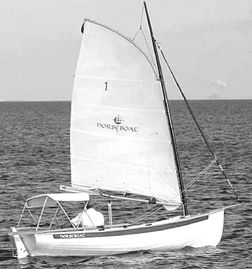
Some sailors who have progressed by laborious steps from owning small daysailing boats to larger cruising boats occasionally suffer a bout of nostalgia. It gets expressed in wistful thoughts like, “If only sailing was as simple as it was with my Sunfish,” “I had more fun with that O’Day 19, even though it wasn’t a rocketship,” or, “Boy, that Cal 20 was awfully easy to maintain.”
So it really is fun to get your hands on something like the Norseboat 17.5, a daysailer whose simplicity, performance, and traditional good looks add up to simple pleasure.
She weighs but 400 lbs. before you load her up with food and a case or two of your favorite beverage, but the boat can still be rowed with some effort.
Don’t be fooled by her simple appearance. She has a skin of vinylester and a GRP hull with two layers of biaxial cloth. And the hull, including the inner liner, is bonded-up using Plexus, Corebond, and 3M 5200.
In the review, we compared the Norseboat with the only boat that seemed appropriately similar, that being the Drascombe Lugger, an English-built design that seems to attract the longing glances of every would-be sailor. The Drascombe is slightly larger, much heavier, a lot more expensive, and because it’s built in the UK, it’s rarely available in the U.S.
This boat is versatile and fun. It lists for $12,495. For dreams alone, we recommend the Norseboat.
Edson Cockpit Tables
Another of Practical Sailor’s ambitious projects in 2005 was a hard look at cockpit tables, primarily the fold-down kind that attach to pedestal guards on boats with wheel steering.
It was a difficult project, the outcome of which was a six-page report in the Nov. 1 issue. The article included 10 photos and a large chart comparing 11 tables from seven manufacturers—Edson, Garelick, Lewmar, Magma, Marinco, SnapIt, and Teak-Flex.
Though widely different, each table was properly mounted to a pedestal guard, which gave PS the opportunity to experience and make judgments about the ease or difficulty of retrofitting a folding table. As with other gear that PS handles, the installation was not given much weight in the final decisions because the installation of any gear is one of those chores usually done but once. One prefers it to be simple and easy, of course, but it’s not overly important in the assessment of most items. However, because the installations of these tables ranged from easy to difficult, that information is listed on the chart.
More important are the sizes, prices, materials, weights, sturdiness, and ease of operation. As with anything that sits in plain sight, looks have considerable importance. The teak tables, especially the beautifully-made and finely-finished models, look better than the plastic tables. However, teak requires maintenance. So no ratings were offered regarding the subjective realm of looks.
But setting up and folding a table are important functions. All of these tables easily won approval, even though they are different and vary in the ease and quickness with which they can be rigged and stowed.
The single factor of enormous importance is the support system for the tables. If a table’s support fails by breaking or bending, the table becomes useless. That’s why the support system counted heavily in our test.
Though they charge a lot for them, Edson rules among cockpit tables and their luncheon table, to which can be affixed several wings called Traybles, is the best of the lot. The teak version of the table (available also in white poly) lists for $295. Traybles are $198. Brackets mounted below to permit food to be prepared and passed topside on a Trayble are $36 each. And brackets to stow a Trayble on a bulkhead are $44. A complete set would cost $850; so it might be better to go for Edson’s larger double-leaf table, which lists for $595 in teak.
Contacts
• Sospenders, 800/585-5876, www.sospenders.com
• Epifanes, 800/321-3444, www.epifanes.com
• Schaefer Marine, 508/995-9511, www.schaefermarine.com
• Standard Horizon, 714/827-7600, www.standardhorizon.com
• Lewmar, 800/362-7212, www.lewmar.com
• Icom, 425/454-7619, www.icomamerica.com
• Johnson Marine, 800/874-7455, www.csjohnson.com
• Maxwell, 714/689-2900, www.maxwellmarine.com
• Lofrans, 508/995-7000, www.imtra.com
• Lewmar, 203/458-6200, www.lewmar.com
• Quick, 866/383-1888, www.plastimousa.com
• Norseboat Ltd., 902/659-2790, www.norseboat.com
• Edson, 508/995-9711, www.edsonintl.com






























